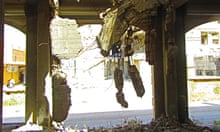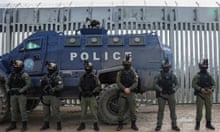More than 17,000 people are now known to have died after the huge earthquake in Turkey and Syria and the focus right now is on supporting survivors.
But there are wider geological implications to the quake that may have consequences in the longer term slowly coming into focus. In the coastal city of İskenderun, there appears to have been significant subsidence, which has resulted in flooding, while the quake has left many hillsides around the country at a serious risk of landslip. This may result in roads and pipelines having to be rerouted and communities rehomed.
İskenderun'da deniz seviyesi yükseldi! Caddeleri su bastı https://t.co/Kx32LnLX24 pic.twitter.com/5fqX9XHbkC
— CNN TÜRK (@cnnturk) February 7, 2023
The subsidence in the city of İskenderun can be seen in CNN footage from the afternoon of 7 February – more than 24 hours after the first deadly quake struck. It shows vehicles driving along waterlogged roads, accompanied by reports that the sea had encroached 200 metres inland. Exactly what caused this subsidence is still up for debate.
“Although this very large earthquake produced mostly horizontal movement, it’s certainly plausible that there was a fault splay that caused some widespread subsidence like this,” said Tim Wright, from the Centre for the Observation and Modelling of Earthquakes, Volcanoes and Tectonics in the UK.
Jose Borrero, director of eCoast Marine Consulting and Research in New Zealand, said: “The level and size of the subsidence would be totally expected from this size of quake.”
Similar changes were seen in the Turkish town of Gölcük after the 1999 İzmit/Kocaeli earthquake, and more recently along the coast following the 2016 Kaikoura earthquake in New Zealand – both of which were also large strike-slip (horizontal movement) earthquakes. Liquefaction of soft sediment, high waves from stormy weather or a small tsunami may also have played a role and it is not yet clear whether the subsidence will be permanent. “The satellite data is coming in and that will give us a clearer picture in the next few days,” said Wright.
Cloudy weather prevented satellite imagery from being gathered immediately after the quake, but clearer skies on subsequent days have revealed significant numbers of landslides and rockfalls across the region. A map produced by the United States Geological Survey suggests that extensive landslip is likely to have occurred in the hilly region to the north of the city of Gaziantep, with tens of thousands of people affected. “Based upon this we are likely to see some landslide fatalities plus substantial numbers of roads blocked by failures. This will impede the rescue work, especially … in more remote areas,” writes Dave Petley on his Landslide Blog.
The Turkish media outlet Sokağın Sesi Gazetesi tweeted a short video of a landslip on the road between Adana and Gaziantep, showing how some upland communities will have been completely cut off by landslides caused by the quakes.
“Most of the footage continues to feature collapses in the urban areas, with very little from the more rural areas. The picture in the more remote parts of the epicentral zone is likely to be desperate,” wrote Petley.










